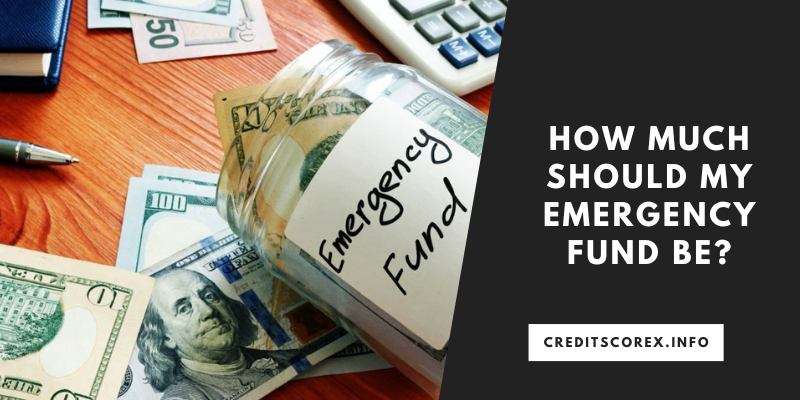
An emergency fund is a cornerstone of financial stability, providing a financial cushion to weather unexpected expenses or income disruptions. Determining the right size for your emergency fund is a crucial aspect of personal finance that involves assessing your individual circumstances, financial goals, and risk tolerance. In this article, we’ll explore key considerations to help you determine how much your emergency fund should be and provide insights into creating a robust financial safety net.
1. Assessing Your Monthly Expenses: Covering Basic Needs
The foundation of your emergency fund is built on a thorough understanding of your monthly expenses. Consider the following:
- Basic Living Expenses: Identify your essential monthly costs, including housing, utilities, groceries, transportation, insurance premiums, and other necessities.
- Debt Obligations: Factor in any recurring debt payments, such as mortgage or rent, car loans, student loans, and credit card minimum payments.
- Discretionary Spending: While your emergency fund primarily aims to cover essentials, it’s beneficial to consider some discretionary spending for a more comprehensive safety net.
2. Estimating Potential Emergencies: Planning for the Unexpected
To determine the right size for your emergency fund, consider potential scenarios that could lead to unexpected expenses or a temporary loss of income:
- Medical Emergencies: Unforeseen medical expenses not covered by insurance.
- Car Repairs: Costs associated with unexpected vehicle breakdowns or accidents.
- Home Repairs: Repair or replacement costs for essential home appliances or systems.
- Job Loss: Building a financial buffer in case of a temporary job loss or income reduction.
3. Calculating the Three to Six Months Rule: A General Guideline
A common guideline for determining the size of your emergency fund is the three to six months’ worth of living expenses rule. This means having enough funds to cover your essential living expenses for three to six months in case of unexpected financial setbacks.
- Three Months: This is a baseline for many individuals and may be suitable for those with stable employment, a dual-income household, or a robust support system.
- Six Months: Individuals with variable income, self-employed individuals, or those in industries with higher job volatility may opt for a larger emergency fund, typically covering six months of living expenses.
4. Considering Individual Factors: Tailoring Your Emergency Fund
While the three to six months guideline provides a starting point, individual circumstances play a significant role in determining the right size for your emergency fund:
- Job Stability: Individuals with stable employment may lean toward the three-month end of the spectrum, while those with more uncertainty may opt for a larger fund.
- Income Variability: If your income is variable or relies on commissions or bonuses, a larger emergency fund can provide added security.
- Dependents: Individuals with dependents may consider a larger fund to account for additional financial responsibilities.
- Healthcare Costs: Individuals with high healthcare costs or a lack of comprehensive insurance coverage may lean toward a larger emergency fund.
5. Adjusting for Specific Goals: Aligning with Your Objectives
Consider your broader financial goals and how your emergency fund fits into your overall financial strategy:
- Short-Term Goals: If you’re actively saving for short-term goals such as a down payment on a home or a major purchase, a larger emergency fund may be prudent to protect those savings.
- Long-Term Goals: Assess how your emergency fund aligns with your long-term financial goals, such as retirement savings or investments.
6. Regularly Review and Adjust: Adapting to Changes
Life is dynamic, and your financial situation may change over time. Regularly review and reassess your emergency fund to ensure it remains aligned with your current circumstances. Life events such as marriage, the birth of a child, or changes in income can prompt adjustments to your emergency fund.
7. Leveraging High-Interest Savings: Maximizing Your Fund’s Potential
Keep your emergency fund in a readily accessible account, such as a high-interest savings account. While these accounts may offer modest interest rates, they provide liquidity and are easily accessible in times of need.
Conclusion: Building a Solid Financial Safety Net
Determining how much your emergency fund should be is a thoughtful and individualized process that requires consideration of your unique circumstances, financial goals, and risk tolerance. By assessing your monthly expenses, estimating potential emergencies, and aligning your fund with your specific goals and needs, you can create a robust financial safety net. Remember that regularly reviewing and adjusting your emergency fund, staying attuned to changes in your financial situation, and leveraging high-interest savings accounts contribute to a comprehensive strategy that can withstand unexpected financial challenges.
Leave a Reply